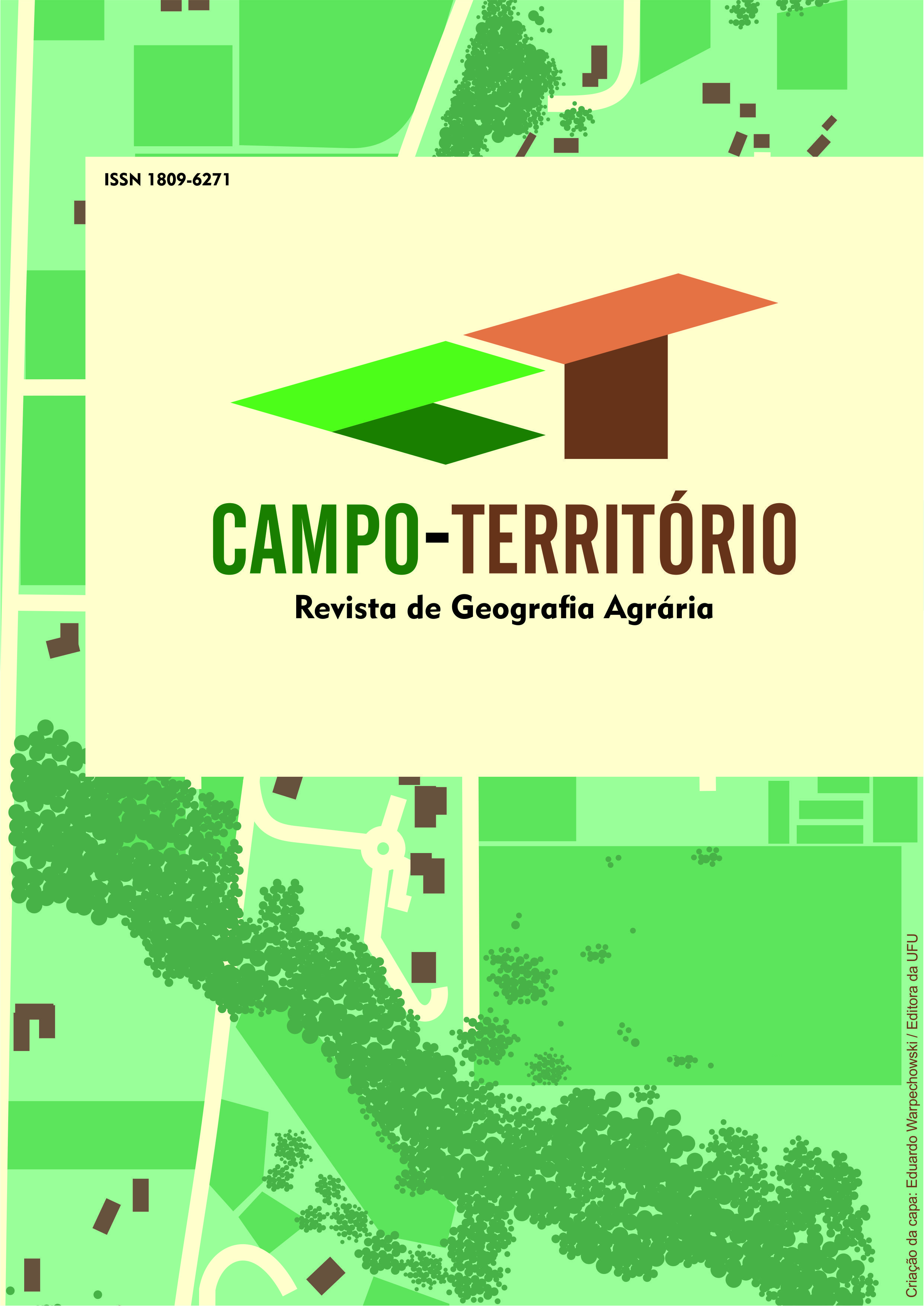Dinâmica da ocupação e formação do território na região do médio Araguaia, no sudoeste tocantinense e a expansão da produção de grãos
DOI:
https://doi.org/10.14393/RCT184967164Palavras-chave:
Uso e Cobertura da Terra, Gestão Territorial, Recursos HídricosResumo
O artigo apresenta uma reflexão sobre a dinâmica de ocupação e a formação do território na região do médio Araguaia, no sudoeste tocantinense, considerando o papel fundamental e estruturador da agricultura irrigada para a produção de grãos. A disponibilidade de recursos hídricos, possibilitou que a região se tornasse uma das maiores produtoras de grãos, arroz e soja, do Estado e de maior representatividade no contexto nacional. A presente pesquisa, analisou a evolução do uso e ocupação da terra ao longo de 30 anos, no período de 1988 a 2018, considerando que a ocupação pela monocultura de grãos ocorreu no início da década de 1980, época em que não contemplava nenhum estudo de impacto ambiental de médio e longo prazo, para o modelo agrícola adotado. As consequências, como o conflito pelo uso da água, em razão da substituição de áreas florestadas por pastagem e agricultura impactaram o ciclo hidrológico na região, alterando na quantidade e distribuição de chuvas. O conhecimento da dinâmica das transformações ocorridas, possibilita tomadas de decisões e estratégias que vissem a melhor gestão dos recursos hídricos, uma vez que a região depende dos sistemas de irrigação para garantir a produção de grãos.
Downloads
Downloads
Publicado
Edição
Seção
Licença
Copyright (c) 2023 Revista Campo-Território

Este trabalho está licenciado sob uma licença Creative Commons Attribution-NonCommercial-NoDerivatives 4.0 International License.






























